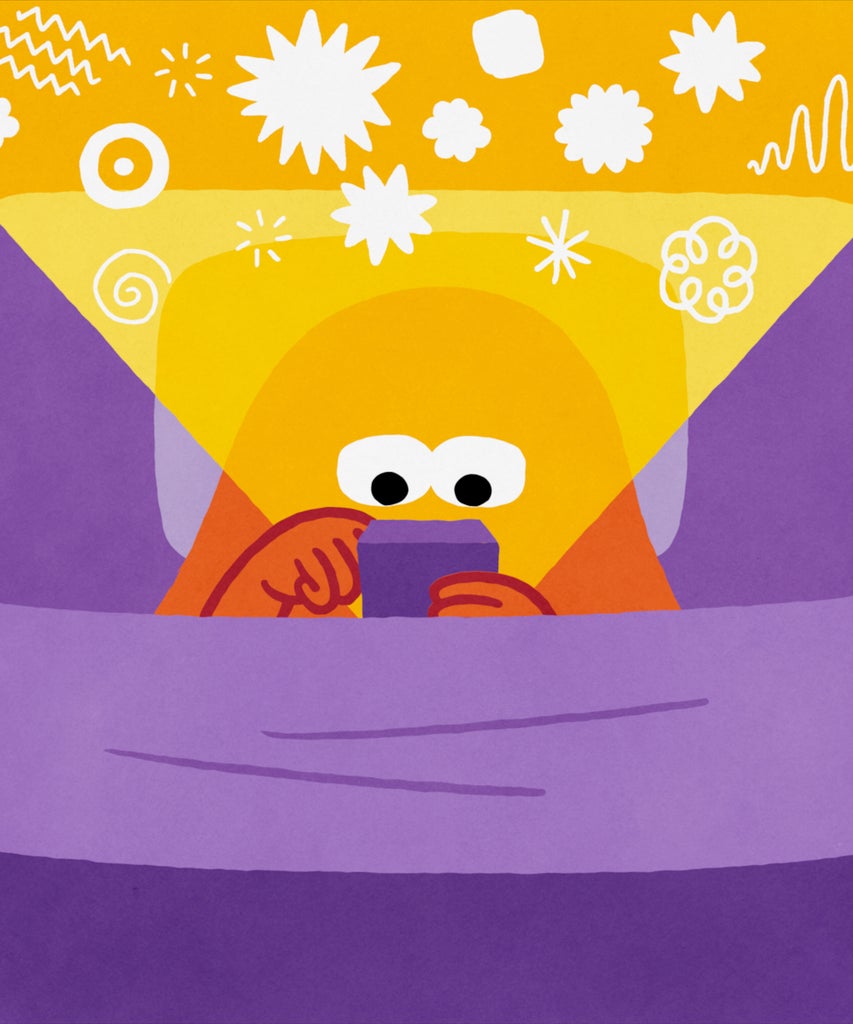
The creators of most TV shows probably don’t hope that viewers fall asleep before the credits start to roll. But putting you to sleep is the goal of a new show debuting on Netflix on April 28: Headspace Guide to Sleep, a seven-episode series that aims to teach us about the science behind getting a restful night of shut-eye. Each episode is around 15 minutes long and ends with a wind-down exercise — hence, the potential to drift off before the show’s even over.
Besides knocking you out, the animated series is meant to educate you about what Eve Lewis Prieto, Headspace’s Director of Meditation and the show’s narrator, calls “the why” of insomnia — that is, why it can be hard to fall asleep, why that’s a problem, and why the techniques included in the series work.
“People’s sleep experiences are going to be so different,” Prieto tells Refinery29. How many hours of sleep people need varies — by individual, but also over the course of your lifespan. So does when people get their best sleep, or whether they sleep in one unbroken stretch or several smaller chunks. That’s why Prieto finds it helpful to stick to science-backed information. “At Headspace we’ve always focused on why a technique helps, how it helps, and how to incorporate it into your life and sleep routine,” she says, explaining that this approach is what helps the most people.
The series is worth watching, but I asked Prieto to cut to the good stuff: her very best tip, the one thing that anyone can do to start noticing improvements in their sleep ASAP.
Her answer was half-predictable, half-surprising. A before-bed routine really is important, she says — something you’ve likely heard before. But she stresses that it’s worth saying again, because during the pandemic the lines between work and rest have blurred for most people, especially those who are working from home. And nothing is worse for sleep. “Stress is designed to keep you awake, and in a state of vigilance,” she notes. “I’ve personally found it very helpful and effective to put space between finishing the workday and bedtime.” She suggests focusing on doing something that feels super-restful and indulgent in the 30 minutes before bed to draw that line around the time and help you get better sleep.
For example, Mariel Buquè, PhD, a therapist and professor at Columbia University, likes to use that time to listen to binaural beats, songs that play a different frequency of sound in each ear to essentially trick your brain into producing relaxing brainwaves. “Last night I listened to that for 30 minutes prior to going to sleep. Everything I was doing had binaural beats in the background… and I ended up going to sleep about 20 minutes earlier than I’d planned because I was so relaxed,” Dr. Buquè previously told Refinery29. Something like this can amp up any relaxing activity, to really set the stage for sleep.
But Prieto surprised me when she added that really, “before-bed strategies” are not the thing that will transform your sleep. Instead, you’ve got to focus on the rest of your day.
She points out that if your stress levels are through the roof all day long, 30 minutes of anything before bed isn’t going to calm you down enough to really allow for restful sleep. And the fact is, we’re living in a particularly stressful time. So the best strategy is to “bring more awareness to how we’re feeling in our day-to-day and the present moment,” Prieto says. If we can catch ourselves as our stress levels begin to creep up during the day, and shift our perspective to put a lid on that tension, we won’t have so much work to do before bed.
That’s where a regular meditation routine comes in. (Hey, it’s Headspace!) Meditation helps you notice your thoughts from a distance; rather than being the one who’s spilling the metaphorical milk, you’re watching an acquaintance do so from across the room. It gives you the ability to think pragmatically about your emotional state, so you can have more control over how you respond in the moment.
And any type of meditation will help you learn how to control your stress (which, by the way, has a ton of trickle-down benefits besides the perks for your sleep). The key is to find something that feels nourishing, not like a chore. The wind-down exercises included in Netflix’s Headspace Guide to Sleep (or its precursor, Netflix’s Headspace Guide to Meditation) are a good place to start, but many people also love more active mindfulness techniques, such as walking meditations or some forms of yoga.
But even though there are plenty of reasons to have hope that the end of the pandemic is in sight, the fact is that we’re still living in very strange circumstances that are often incredibly stressful. So if your best sleep comes after dozing off in front of the TV a few nights a month, we’re not going to judge.
Like what you see? How about some more R29 goodness, right here?
Sleep Yoga May Be The Answer To Your Insomnia
Meet the Adults Who Still Sleep With Blankies
12 Sleep Masks That Will Keep The Sun Out
from Refinery29 https://ift.tt/3u2O0k2
via IFTTT
